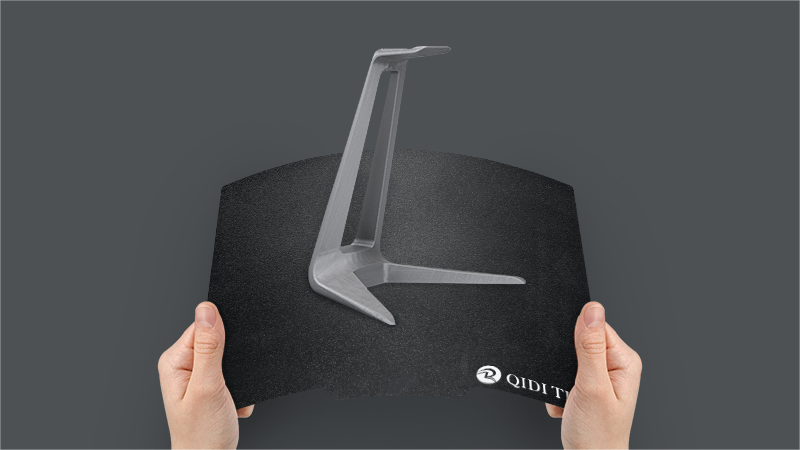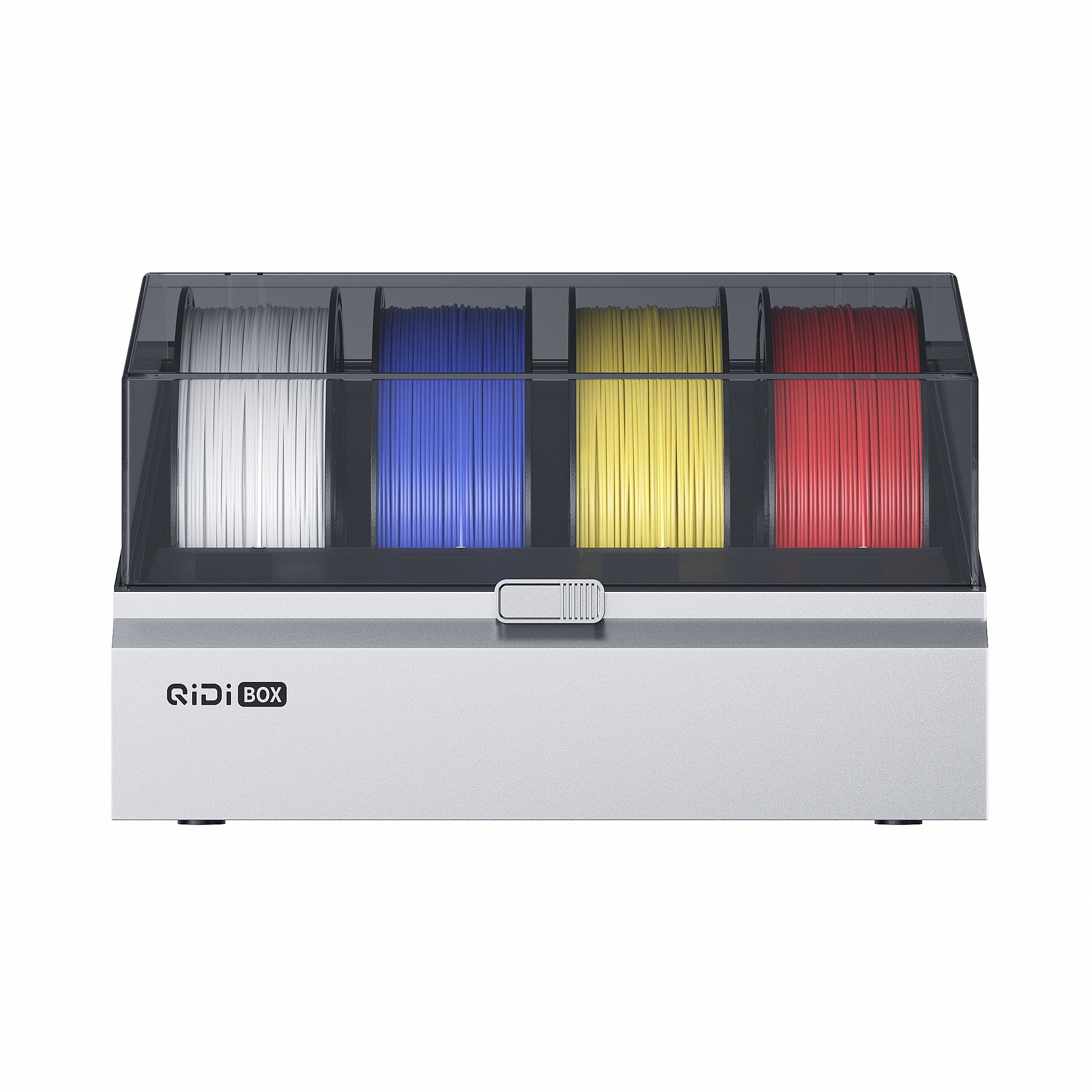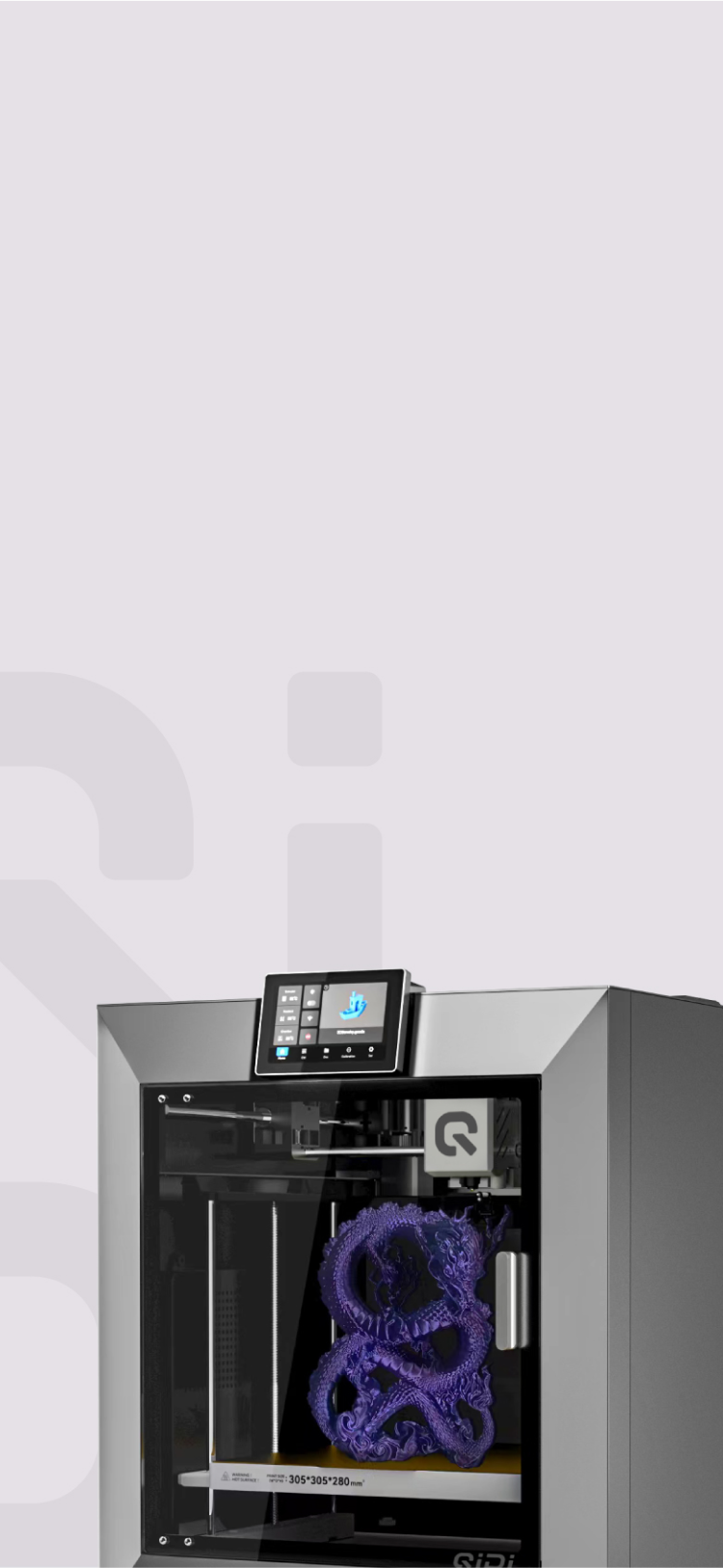Why Is My 3D Print Not Sticking to Bed?


Many 3D printing enthusiasts face a frustrating problem: prints that don't stick properly to the build plate. When this happens, prints can warp, curl up, or even come completely off the plate in the middle of the printing process. This leads to failed prints, wasted materials, and a lot of frustration. In this guide, we'll explore the main reasons why prints don't stick to the build plate and provide simple, practical solutions. By following these tips, you can make sure your 3D prints stick firmly to the build surface from the very first layer until the final, successful result.
Why Good Bed Adhesion Matters in 3D Printing
Good bed adhesion means that the filament material sticks firmly to the build plate, especially during the first few layers of printing. These initial layers form a critical foundation that supports the entire 3D-printed object. If the adhesion is poor, it can quickly lead to problems like warping (where the edges of the print lift up), layer separation (where the layers don't stick together properly), and even complete print failures.
Imagine building a house: if the foundation isn't level and secure, the whole structure will have problems, no matter how well you build the walls and roof. It's the same with 3D printing. The first layers of a print must stick strongly to the build surface. If they don't, you'll inevitably see issues and imperfections as the print progresses.
Common Causes of Poor Bed Adhesion in 3D Printing
Incorrect Bed Temperature
Temperature plays a crucial role in bed adhesion. If the print bed is too hot or too cold, it can lead to issues with filament sticking. Every material has its own optimal temperature range for bed adhesion.
For example, PLA (Polylactic Acid) typically adheres best between 50°C and 60°C, while ABS (Acrylonitrile Butadiene Styrene) may require a bed temperature of around 100°C to 110°C for proper adhesion. Consult your filament manufacturer's recommendations or experiment to find the sweet spot for your specific material.
Uneven Bed Leveling
An uneven print bed can significantly impact bed adhesion. If the nozzle is too close to the bed in some areas and too far away in others, the filament won't adhere evenly, leading to warping and potential print failures.
To ensure proper bed leveling, follow your printer's instructions carefully. Many printers have built-in leveling assistants or require you to manually adjust the bed using a calibration tool. Don't skip this crucial step, as it can save you a lot of headaches down the line.

Dirty Print Bed
A clean print bed is essential for good adhesion. Oils, dust, and residue from previous prints can act as a barrier, preventing the filament from sticking properly.
Before each print, make sure to clean your print bed thoroughly. Use isopropyl alcohol or a dedicated cleaning solution to remove any debris or contaminants. Some users even recommend lightly sanding the print bed to create a rough surface for better adhesion.
Adhesion Requirements for Different 3D Printing Materials
Not all filament materials have the same bed adhesion needs. Each type has unique properties that affect how well it sticks to the build surface.
- PLA (Polylactic Acid) is one of the easiest materials to work with. It has lower printing temperatures and minimal warping, allowing it to stick reasonably well to basic surfaces like plain glass or painter's tape. However, using a high-quality PEI (Polyetherimide) build sheet can further improve PLA adhesion.
- ABS (Acrylonitrile Butadiene Styrene) plastic is more challenging due to its higher printing temperatures and tendency to warp. It usually requires a heated build plate around 100-110°C and an adhesive-coated surface like textured PEI or specialized print surfaces designed for ABS.
- Flexible filaments like TPU (Thermoplastic Polyurethane) can be the most difficult when it comes to bed adhesion. The same properties that make them flexible also make it hard for them to stick, especially on bare glass or metal surfaces. Using adhesives like hairspray, glue sticks, or even packing tape on the build plate may be necessary for good TPU bed adhesion. Special flexible build surfaces can also help.
To achieve good adhesion from the start, it's essential to understand and accommodate the unique characteristics of the filament you're using.

How Print Speed and Nozzle Height Affect Bed Adhesion
Print Speed
The speed at which you print can greatly influence bed adhesion, particularly during the first few layers. If you print too fast, the filament might not have enough time to stick properly to the build surface before the printer starts putting down the next layer.
To improve adhesion, use a slower print speed for the initial layers, usually around 25-30% of your normal speed. This slower pace gives the filament time to cool and form a strong bond with the build surface. After these crucial first layers are complete, you can gradually increase the speed to your preferred setting.
Nozzle Height
Nozzle height, which refers to the distance between the printer's nozzle and the build surface, is another important factor in bed adhesion. If the nozzle is positioned too high above the bed, the filament may not stick properly. On the other hand, if the nozzle is too close to the bed, it can cause the filament to smear or create an uneven surface.
To address this, most 3D printers have a feature that allows you to calibrate the nozzle height, or they may require you to manually adjust the distance using a special tool. Carefully follow your printer's instructions and adjust the nozzle height until you achieve a perfect first layer – one that's not too squished or too loose.
How to Use Adhesives and Special Surfaces for Better Bed Adhesion in 3D Printing
Adhesive Solutions
If you've tried the previously mentioned methods and you're still having trouble with bed adhesion, consider using an adhesive. Adhesives can help create a stronger bond between the filament and the build surface.
Hairspray is a popular choice. Just apply a light, even coat of hairspray to the print bed before starting your print. The hairspray acts as a temporary adhesive, helping the filament stick until it cools and hardens.
Glue sticks are another inexpensive and effective option. Apply a thin layer of glue to the print bed and let it dry before printing. The glue creates a stickier surface for the filament to adhere to.
You can also find commercial adhesives made specifically for 3D printing, such as specialized hairsprays or bed adhesives. These products can provide even better adhesion and are often designed for specific types of filaments.
Build Surface Materials
The material of your build surface can also greatly affect bed adhesion. Many printers come with a standard build surface, like a heated glass plate.
However, you might want to consider upgrading to a more specialized build surface material for better adhesion. For example, PEI (Polyetherimide) sheets are known for their excellent adhesion properties, especially for materials like ABS and PETG.
Other options include textured build surfaces, such as PEX (Cross-linked Polyethylene) or powder-coated plates. These surfaces provide a rougher texture for the filament to grip onto, improving adhesion.
How Your 3D Printing Environment Affects Bed Adhesion
Even if you have the perfect bed temperature, leveling, and surface preparation, the environment around your 3D printer can still impact bed adhesion.
Drafts and Temperature Changes
Drafts and sudden changes in temperature can cause the filament to cool unevenly, which can lead to warping and poor adhesion. To prevent this, it's important to minimize drafts and keep a stable temperature around your 3D printer.
One solution is to enclose your printer or place it in a dedicated printing area, away from air vents, windows, and doors. Some users even choose to use a temperature-controlled enclosure to maintain a consistent printing environment.

Humidity
High humidity levels can also affect bed adhesion, especially for filaments that are sensitive to moisture, such as Nylon or certain types of ABS. When there's too much moisture in the air, the filament can absorb water, which can cause bubbling, warping, and adhesion problems.
To combat humidity issues, consider investing in a dehumidifier or a filament drying solution. You can also store your filament in airtight containers with desiccant packs, which help absorb moisture and keep your filament dry and ready for optimal printing.
Step-by-Step Guide to Fixing Bed Adhesion Issues in 3D Printing
If you've tried the methods mentioned above and you're still having trouble with bed adhesion, follow this step-by-step troubleshooting guide.
Step 1: Double-check your Bed Temperature and Leveling
First, make sure that your bed temperature is set correctly for the type of filament you're using. Also, check that your bed is properly leveled. These are the most common reasons for poor bed adhesion, so it's important to double-check these settings before moving on.
Step 2: Clean Your Print Bed Thoroughly
Even if your print bed looks clean, it's a good idea to give it a thorough cleaning with isopropyl alcohol or a special cleaning solution. Over time, oils and residues can build up on the surface, making it harder for the filament to stick.
Step 3: Adjust Your Print Speed and Nozzle Height
If the first few layers aren't sticking, try reducing your print speed for the initial layers. You can also fine-tune your nozzle height to get the perfect first layer.
Step 4: Try an Adhesive Solution or a Different Build Surface
If you've tried everything else and you're still having adhesion problems, consider using an adhesive solution or upgrading to a different build surface material.
Step 5: Check Your Printing Environment
Lastly, take a look at your printing environment. Check for issues like drafts, temperature changes, or high humidity levels. Make any necessary adjustments to create the best possible printing conditions.
Tips and Tricks from 3D Printing Experts
Sometimes, even after addressing all the common causes of poor bed adhesion, certain prints can still be tricky. In these cases, it's helpful to learn from the experiences of seasoned 3D printer users.
Experiment and Fine-Tune Your Settings
Don't be afraid to try out different settings, materials, and techniques. Keep in mind that every printer and filament combination is unique, so what works for one user might not work for another.
As you print, continuously fine-tune your settings and keep track of your results. Share your findings with the 3D printing community, too. Over time, you'll develop a strong understanding of what works best for your specific setup.
Try Advanced Techniques
As you become more experienced with 3D printing, you may want to explore some advanced techniques, such as:
- Using a brim or raft:These are extra layers printed around or under your object, which increase the surface area and improve adhesion for challenging prints.
- Adjusting the extrusion multiplier or flow rate:This can help you achieve the perfect first layer by fine-tuning how much filament is extruded.
- Implementing custom start and end G-code scripts:These scripts can be used to optimize adhesion and print quality by customizing the printer's behavior at the beginning and end of a print.
3D printing is a combination of art and science, and mastering bed adhesion is a key part of the learning process.
Achieving Fail-Safe Bed Adhesion
Conquering poor bed adhesion is the key to consistently great 3D prints. While it can be frustrating, a systematic approach to addressing factors like temperature, leveling, surface preparation, and environment will help your prints stick properly every time. Don't be afraid to experiment and seek advice from the 3D printing community. With patience and persistence, you'll soon master this crucial aspect of 3D printing, ensuring that each object adheres perfectly to the build plate. Start applying these tips and techniques today to take your 3D printing results to the next level!


 Q2
Q2
 Plus 4
Plus 4
 QIDI Box
QIDI Box
 Q1 Pro
Q1 Pro
 X-Max 3
X-Max 3

